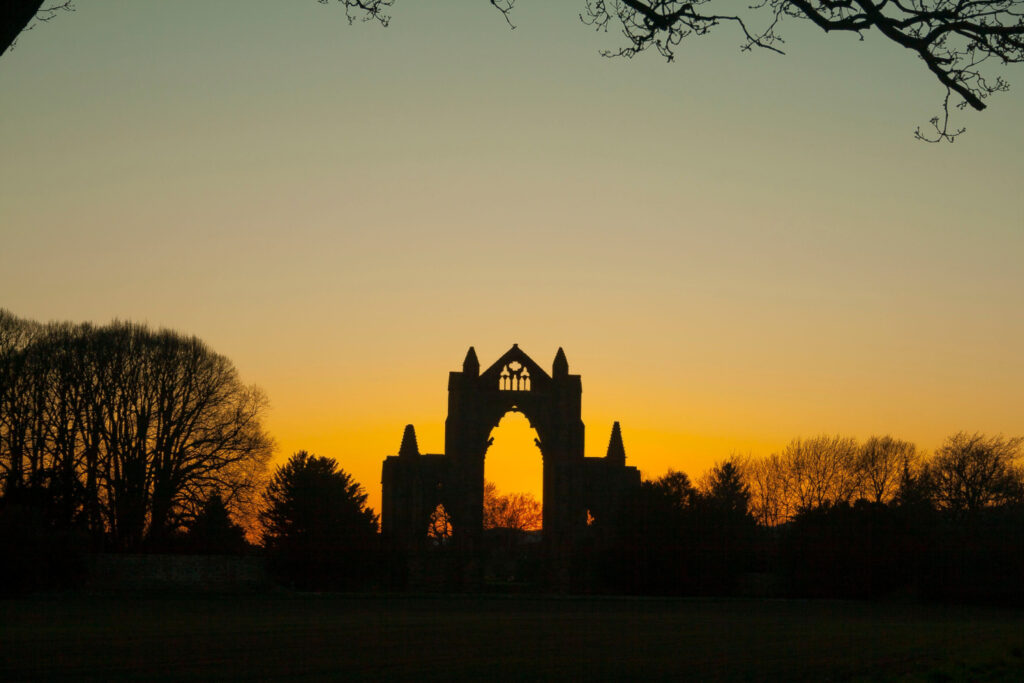In the lead up to the Christmas season, no doubt many will be keen to discover a few picturesque walks. Guisborough Priory on the edge of North Yorkshire in the Tees Valley, is the perfect backdrop to any seasonal stroll, with its Priory gardens and 18th century Monks Walk, allowing one to wander towards an arrangement of carved standing stones discovered during excavations in 1867.
Rising from the ground like an ancient Gothic skeleton, the ruins of this former 14th century monastery are all but gone except for the former abbey church’s east end.

As such stories usually go, Guisborough Priory fell at the hands of Henry VIII and his commissioners back in 1539. His religious reforms swept away not only common devotional practices but also the great institutions that supported them. And this priory, one of the wealthiest monasteries in all of northern England in the Tudor era, was at the top of the list, though ironically, was one of the last larger monasteries to be dissolved.
Guisborough is an important monastery for various reasons, not least because it was one of the earliest Augustinian priories constructed in the country. Furthermore, it was connected to the mighty Bruce family, the ancestors of the Bruce we all know, Robert, king of Scotland, also known as Braveheart. This followed William the Conqueror’s granting of large estates across what is now Redcar and Cleveland to many of his supporters. One of those included a Norman noble named Robert de Brus. His son, also named Robert, established the priory, and awarded the canons the entire Guisborough estates including all of the income from around 10,000 acres populated by many mills and 10 churches. In thanks, the canons would say prayers for the family and members were to be buried there for centuries to come. However, this line of the family died out in 1272.
Though an outstanding example of Gothic architecture, which occurred following a destructive conflagration in 1289 following which the Romanesque structure was rebuilt, the monastery was in fact rebuilt three times, largely to adhere to popular tastes but also as an example of the wealth amassed by the priory. There was even a school established here for poor boys which served to train them into choristers. In fact, this was quite a common practice in the medieval era and is the origin of many schools today. Nonetheless, the canons weren’t always devoted adherents to God. In fact, during one of the bishops’ visitations, they were recorded as taking part in many lewd behaviours and reprimanded for faking sickness, brawling, and even alcoholism!